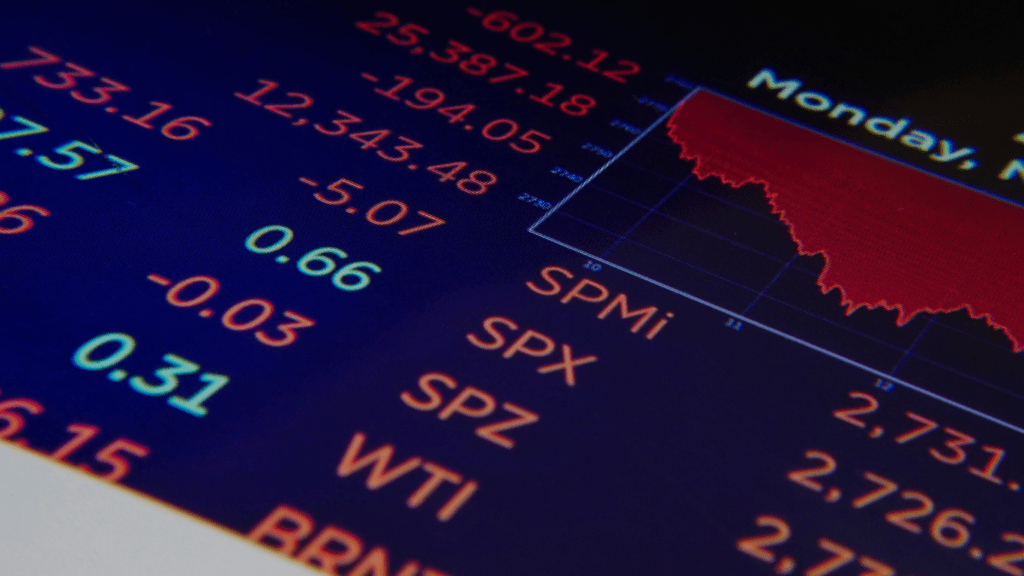Navigating the unpredictable waters of market volatility can be a daunting task for any investor. As someone who’s seen the highs and lows of the financial world, I understand the importance of safeguarding your investments during turbulent times.
In this article, I’ll share valuable insights on how to shield your portfolio from the stormy seas of market fluctuations. In today’s fast-paced financial landscape, it’s crucial to have a solid strategy in place to mitigate risks and preserve your hard-earned capital.
I’ll delve into practical tips and proven techniques that can help you weather the storm when markets get choppy. By staying informed, staying proactive, and staying focused on your long-term goals, you can navigate market volatility with confidence and protect your investments from unnecessary turbulence.
Understanding Market Volatility
Market volatility refers to the degree of variation in the prices of financial instruments within a certain period. It is a natural part of investing and can present both risks and opportunities for investors.
While it can be unsettling, understanding the nature of market volatility is crucial for making informed investment decisions. Volatility is often driven by factors such as economic indicators, geopolitical events, and investor sentiment.
By comprehending these drivers, investors can better anticipate and react to market movements. Monitoring volatility indices like the VIX can provide insights into market expectations and risk levels.
During periods of high volatility, asset prices can fluctuate rapidly, leading to potential short-term losses. However, it’s essential to remember that volatility is temporary and tends to revert to historical levels over time.
By maintaining a long-term perspective and staying focused on investment goals, investors can weather turbulent market conditions more effectively. Diversification is a key strategy for mitigating the impact of market volatility on investment portfolios.
Spreading investments across different asset classes and industries can help reduce risk exposure. Additionally, having a well-defined investment plan and sticking to it during volatile market phases can instill discipline and prevent emotional decision-making.
Understanding market volatility is integral to safeguarding investments during turbulent times. By staying informed, maintaining a long-term view, diversifying portfolios, and adhering to a solid investment strategy, investors can navigate market fluctuations with confidence and resilience.
Diversification as a Strategy
- Benefits of Diversification: Diversification is vital for protecting investments during market volatility by spreading assets across different classes and industries. This strategy minimizes risk and helps shield the portfolio from significant losses in any single sector.
- Stability Through Strategic Planning: A well-structured investment plan that emphasizes diversification enhances portfolio resilience against market fluctuations. By balancing investments, I can maintain focus on long-term financial goals and reduce the impact of short-term market changes.
Importance of Asset Allocation
Asset allocation is crucial for protecting investments during market volatility. It involves dividing your investment portfolio among different asset classes like stocks, bonds, and cash. By strategically diversifying your investments, you can minimize risks and enhance returns over time.
Diversification through asset allocation spreads risk across various investment types, reducing the impact of market fluctuations on your overall portfolio. For example, during a stock market downturn, having a portion of your funds allocated to bonds or other asset classes can help cushion losses.
A well-thought-out asset allocation plan tailored to your risk tolerance and financial goals is essential in weathering market volatility. Regularly reviewing and rebalancing your portfolio to maintain your target asset allocation ensures that you stay on track with your investment objectives despite changing market conditions.
Asset allocation is a powerful tool that provides stability and resilience to your investment portfolio, making it imperative for investors to allocate their assets wisely to navigate market uncertainties confidently.
Rebalancing Your Portfolio
Rebalancing my portfolio is a critical task that I prioritize to safeguard my investments during market volatility. It’s essential to adjust the asset allocation in my portfolio to maintain the desired level of risk and return.
By periodically reviewing and rebalancing my investments, I ensure that they align with my long-term financial goals and risk tolerance. When rebalancing, I assess the performance of each asset class in my portfolio and make adjustments to realign them with my target allocations.
This proactive approach allows me to buy low and sell high, taking advantage of market fluctuations to optimize my returns. By diversifying across various asset classes and regularly rebalancing, I mitigate risks and enhance the overall stability of my portfolio.
I base my rebalancing decisions on a well-thought-out investment plan that considers my financial objectives and risk tolerance. Staying disciplined and sticking to my rebalancing schedule helps me avoid emotional decision-making during times of market volatility.
I rely on data-driven analysis and sound investment principles to make informed choices and ensure that my portfolio remains resilient in the face of market uncertainties. Incorporating rebalancing into my investment strategy is a key element in protecting my investments during turbulent market conditions.
It allows me to stay focused on my long-term goals while navigating short-term market fluctuations with confidence and poise. Regularly reviewing my portfolio’s asset allocation and rebalancing when needed are integral parts of my proactive approach to managing risk and maximizing returns in any market environment.
Staying Informed and Avoiding Emotional Decisions
In staying informed and avoiding emotional decisions during market volatility, I prioritize data-driven strategies over impulsive reactions. Understanding market trends is crucial for making informed investment decisions regardless of the circumstances.
Monitoring volatility indices, economic indicators, and geopolitical events provides valuable insights into potential market movements. By staying informed, I equip myself with the necessary knowledge to anticipate changes and adjust my investment approach accordingly.
It’s essential to avoid emotional reactions to short-term market fluctuations and focus on the long-term objectives outlined in my investment plan. Reacting emotionally to market volatility can lead to hasty decision-making that may harm investment portfolios in the long run.
Additionally, remaining disciplined and sticking to a well-structured investment plan is key to navigating market uncertainty with confidence. Diversification plays a vital role in ensuring that my investments are spread across various asset classes to minimize risks.
This strategy allows me to capitalize on growth opportunities while safeguarding my portfolio from significant losses during turbulent times. Regularly reviewing and rebalancing my portfolio is a proactive measure to maintain alignment with my investment goals.
Rebalancing involves adjusting asset allocation to manage risks and optimize returns, ensuring that my investments remain in line with my risk tolerance and financial objectives. By incorporating rebalancing into my investment strategy, I can confidently weather market volatility and stay focused on long-term wealth accumulation.


 Mary Whitley has been a vital force behind the success of Lend Crypto Volt, focusing on community engagement and user experience. With a passion for connecting people to information, she has worked tirelessly to ensure the platform provides relevant and accessible content for all users. Mary's commitment to fostering an inclusive environment has helped build a strong community of crypto enthusiasts, making Lend Crypto Volt a trusted source for those seeking to understand the cryptocurrency landscape.
Mary Whitley has been a vital force behind the success of Lend Crypto Volt, focusing on community engagement and user experience. With a passion for connecting people to information, she has worked tirelessly to ensure the platform provides relevant and accessible content for all users. Mary's commitment to fostering an inclusive environment has helped build a strong community of crypto enthusiasts, making Lend Crypto Volt a trusted source for those seeking to understand the cryptocurrency landscape.